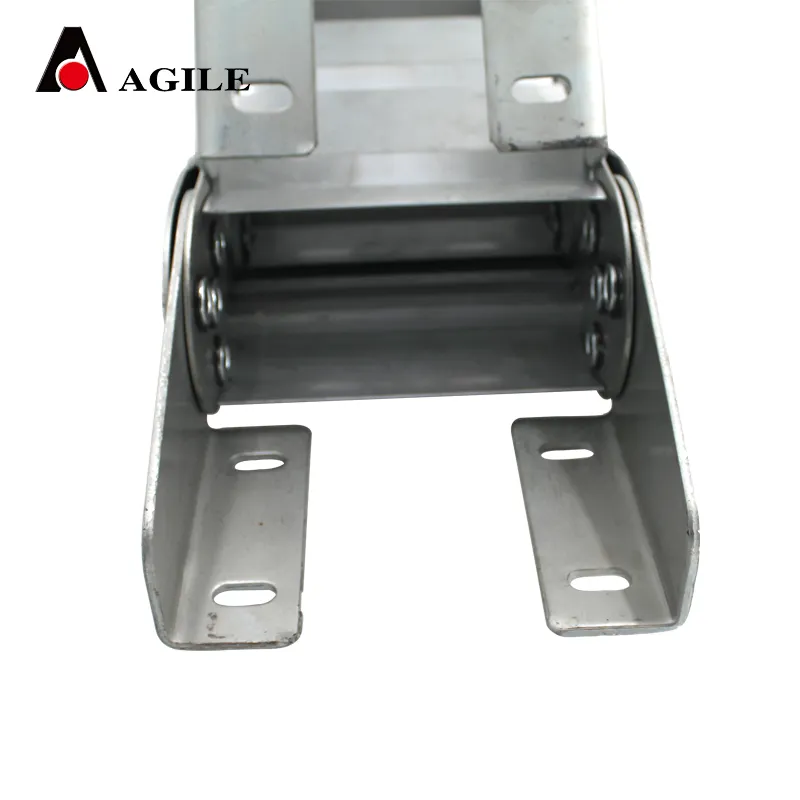flexible cable carrier
Understanding Flexible Cable Carriers A Comprehensive Guide
In the world of machinery and automation, the need for efficient organization and protection of cables is paramount. This is where flexible cable carriers come into play, serving as an essential component across various industries, including manufacturing, robotics, and aerospace. This article explores what flexible cable carriers are, their advantages, applications, and best practices for selection and maintenance.
What is a Flexible Cable Carrier?
A flexible cable carrier, also known as a cable drag chain, is a system designed to manage and protect cables and hoses in motion. These carriers consist of interconnected links that form a chain, allowing cables to move freely while maintaining organization and preventing damage. Their design facilitates the quick routing of cables, making them an integral part of automated systems where equipment moves along defined paths.
Advantages of Flexible Cable Carriers
1. Enhanced Protection One of the primary benefits of using flexible cable carriers is that they protect cables and hoses from abrasion, entanglement, and environmental hazards. This protection extends the life of cables and reduces maintenance costs.
2. Improved Mobility Flexible cable carriers can accommodate multi-directional movement, allowing them to perform effectively in dynamic environments. This mobility is crucial for applications requiring high-speed or complex movements, such as robotic arms or CNC machines.
3. Space Efficiency By organizing cables into a single system, flexible cable carriers save space and lessen the complexity associated with managing multiple cables. They promote tidiness and reduce the risk of accidents caused by cable tangling.
4. Customization Flexible cable carriers are highly customizable. They come in various shapes, sizes, and materials, allowing businesses to choose systems that fit their specific application needs. This adaptability enhances their appeal across various sectors.
5. Ease of Installation Many flexible cable carriers feature easy installation options. They can be installed in both horizontal and vertical orientations, accommodating different machinery layouts without complex setups.
flexible cable carrier

Applications of Flexible Cable Carriers
Flexible cable carriers are used in a wide range of applications. In manufacturing plants, they ensure that power, data, and control wires are organized and protected on moving machinery. In the aerospace sector, they manage cables in aircraft assemblies, maintaining functionality while minimizing risks during flight operations.
Robotics is another significant field for flexible cable carriers. They facilitate the movement of robotic arms, ensuring the continuity of power and information as the arm navigates its tasks. Additionally, in the entertainment industry, cable carriers are employed in stage equipment to manage lighting and sound cables, contributing to a safer and more efficient setup.
Best Practices for Selection and Maintenance
When selecting a flexible cable carrier, consider the following factors
- Load Capacity Ensure the carrier can accommodate the weight and size of the cables or hoses it will hold. - Travel Distance Determine the length of the cable carrier needed based on the machine's movement range. - Environmental Conditions Select materials that can withstand environmental factors such as temperature, exposure to chemicals, or moisture. - Bend Radius Consider the minimum bend radius to prevent cable damage during operation.
Once installed, regular maintenance is essential for ensuring the longevity of flexible cable carriers. Inspect the carriers for wear and tear, ensure that cables are not pinched or frayed, and lubricate moving parts as necessary.
Conclusion
In summary, flexible cable carriers are a vital component in modern machinery and automation. Their ability to protect and organize cables while allowing for smooth movement makes them an indispensable asset in various industries. By understanding their advantages, applications, and maintenance practices, businesses can optimize their use and enhance the efficiency and safety of their operations. Whether in a factory, an aircraft, or a robotic assembly line, flexible cable carriers are a smart choice for anyone looking to improve their cable management system.








